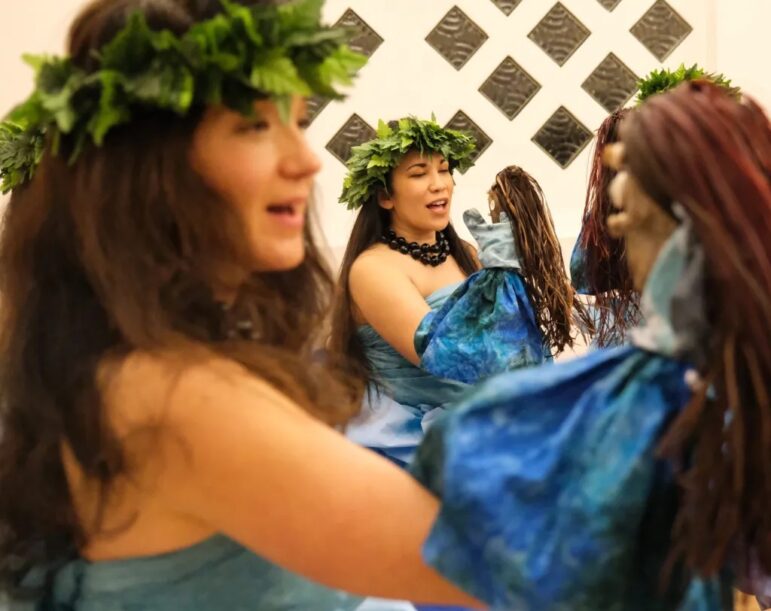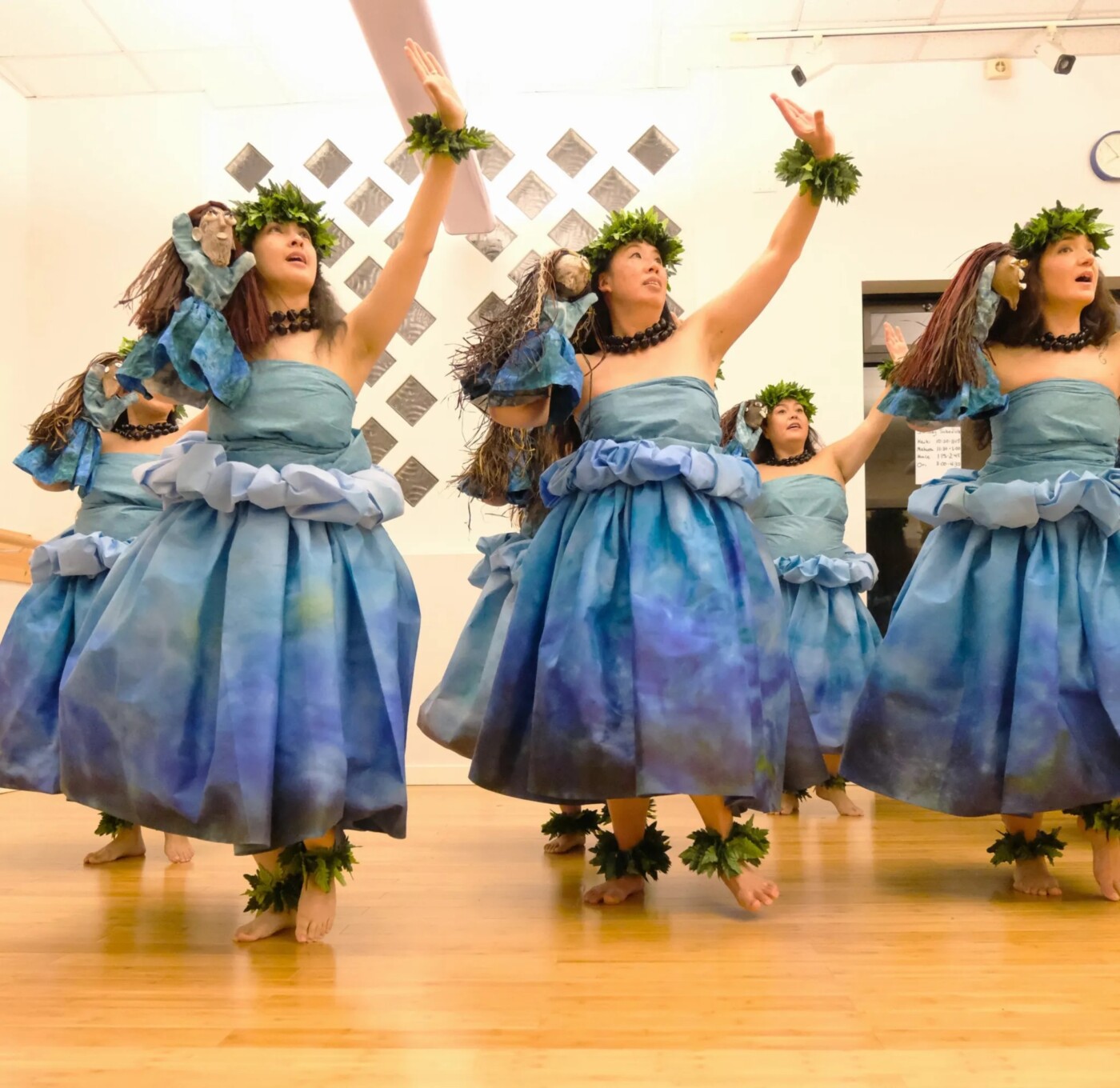In her 30 years of teaching the art and culture of Hawaiian dance, it would seem Māhealani Uchiyama had exhausted the possibilities of the form. But the Berkeley-based dancer, teacher, writer and recording artist is about to present a special performance that might take even seasoned hula fans by surprise.
With her new production, “Wai Ola, ‘Aukele and the Waters of Life,” Uchiyama introduces audiences to a new work in the tradition of hula ki’i — a long-treasured dance form that brings together live hula performers and traditional handcrafted puppets.
As the featured event in this month’s 30th anniversary celebration of the Māhea Uchiyama Center for International Dance — weeks that have included dance, music, craft and drumming workshops — the new production headlines a program that also includes traditional Hawaiian and Tahitian songs, and hulas in the contemporary O’auana style. Two performances are on the schedule, March 18 at 2 and 8 p.m. at Rhythmix Cultural Works in Alameda.
In a recent rehearsal at Uchiyama’s Berkeley studio, her company was deep in preparation for “Wai Ola,” an unusual dramatic work developed as part of a choreography award from the Gerbode Foundation.
The rehearsal started with Uchiyama on the Hawaiian pahu drum, leading her dancers through warm-ups — the kaholos, amis and other fundamental steps that comprise a hula dancer’s repertoire.
With the evening’s run-through of “Wai Ola,” the group became both more energized and more expressive. Featuring guest artist John-Mario Sevilla in the title role, the company dancers brought forth the ki’i puppets — earthy creations made of fabric, coconut shells, fibers, nuts, and other found objects — and launched into this turbulent work.
A large, slightly more than human-sized puppet — described by Uchiyama as “a nature force, a matrix of energy” — looked on from one side.
Two Hawaiian dance masters — Kumu Hula Ki’i Mauli Ola Cook and Kumu Hula Maile Loo, both artists in the tradition of legendary Kumu Nona Beamer — joined the rehearsal via Zoom from Hawaii, speaking the production’s narrative parts and offering notes as Uchiyama and her dancers fine-tuned the production. Uchiyama later explained that the Hawaiian kumus have lent their support and advice to the project since its inception.
“Wai Ola” is an old work, a kind of Hawaiian creation story; it centers on ‘Aukele, a Hawaiian folk hero who embarks on a perilous sea voyage. Uchiyama says it’s never been performed this way; in that sense, it’s the world premiere of a traditional tale, one that brings together several disciplines.

“One of the Kumu is very much a storyteller; that’s a part of the tradition,” she explained. “The story that she’s telling is a traditional one, but to our knowledge it has never been depicted in this form. We wanted something that had never been done before, using of course a very old form to tell that story.”
As they developed the production, Uchiyama says that the work also acquired contemporary resonance around issues of water use.
“That’s one of the things that we noticed we have in common, in Hawaii as well as in California — the issue of access to water,” she said. “There are issues going on in Hawaii right now, with people being denied access to parts of their environment that traditionally belong to the people of that land — water that’s been re-directed to service plantations and industry.
“Of course, here in California, we have similar issues with regard to water, the environment, climate change. This being a California-Hawaiian project, it was important to us to find something we’re both struggling with.”
Uchiyama, who was born in Washington, D.C., and lived for many years on the island of Oahu — she earned degrees in Dance Ethnology and Pacific Island Studies from the University of Hawaii — has been teaching Polynesian music and dance for more than 40 years. She has taught workshops throughout the U.S., and was professor of Hawaiian Language at Stanford University. Her work in Berkeley includes classes for children and seniors, hula from beginning to advanced levels, Tahitian, Hawaiian language and music studies.
Asked what she wants people to know about hula, she said “That it’s a living art form. That it’s a spiritual practice as much as a living art form. That it should be respected as something that can take as long to master as classical European ballet. That it’s a storytelling genre that encompasses not only traditional culture, but also commemorates what we’re living through now. And that the stories we’re telling now will resonate with the people who come after we are gone from the planet, just as we are telling the stories that our ancestors are concurrent with.
“In that sense, we have to be very respectful, and careful as to how we regard the learning traditions and not take anything for granted.”
“Wai Ola, ʻAukele and the Waters of Life, A Celebration of Hula Kiʻi” is onstage at 2 and 8 p.m. March 18 at Rhythmix Cultural Works, 2513 Blanding Ave., Alameda. Tickets are $25 at Rhythmix.org.
